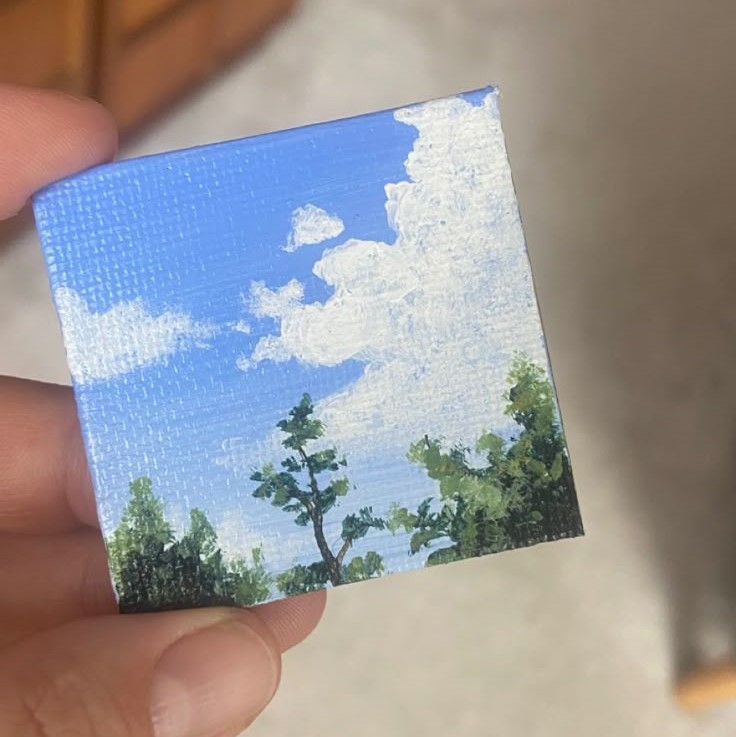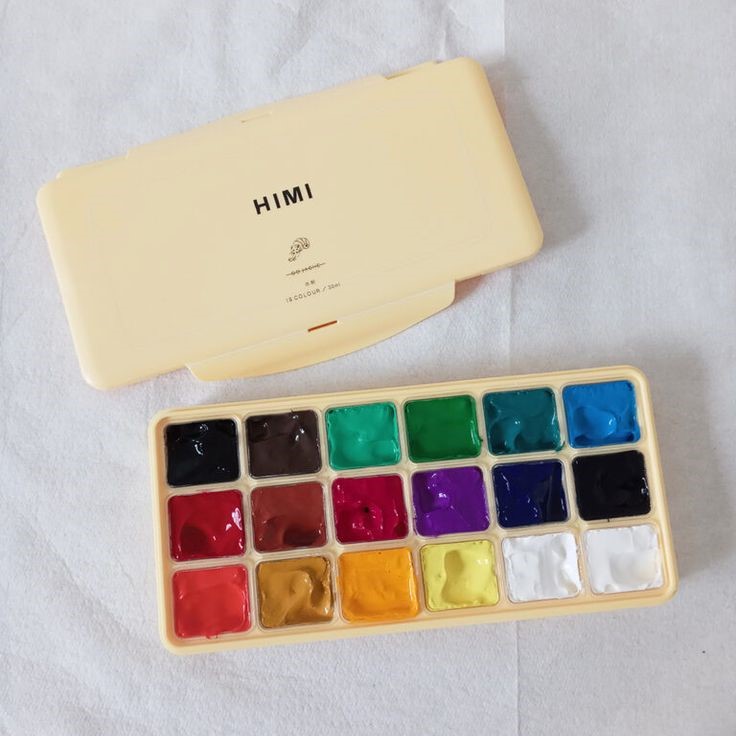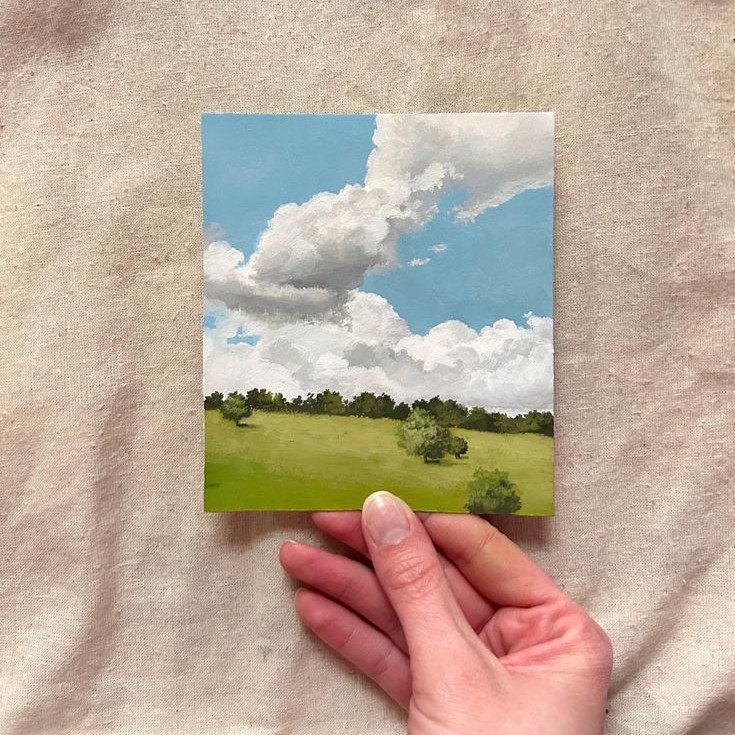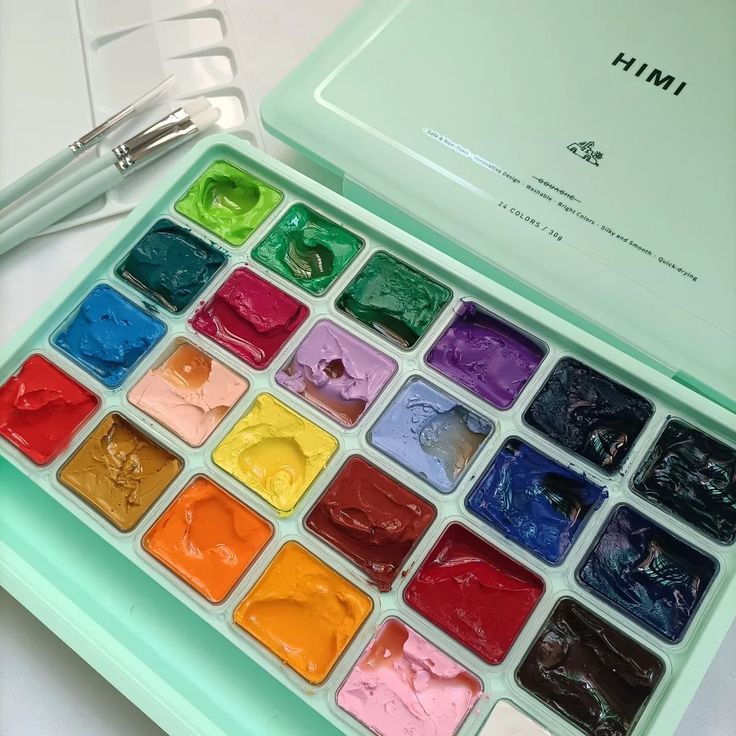What is Gouache Paint?
What is gouache paint? Gouache paint is a unique art medium. It is a type of opaque water-based paint. Artists use it for vibrant, bold artworks. Gouache offers a matte finish and dries quickly, making it versatile.

The composition and characteristics of gouache
Gouache paint consists of pigment, water, and a binding agent, often gum arabic. It has a higher pigment concentration than watercolors, resulting in more intense colors. Unlike acrylic, it is rewettable after drying. Gouache layers smoothly, allowing easy blending and precise details. This paint also enables artists to work on dark surfaces due to its opacity.
Comparison with other types of paint (watercolor, acrylic, oil)
Gouache differs from watercolor in opacity and reworking ability. Watercolor is more transparent, while gouache provides solid coverage. Compared to acrylic, gouache is less permanent and can be reactivated with water. Acrylic dries faster and forms a durable finish. In contrast to oil paint, gouache has a quicker drying time and is water-based, making cleanup easier and safer.
History and Origins of Gouache
Gouache paint has a rich history and has evolved significantly over time. It started as an artistic medium centuries ago and has gained popularity across the globe.
Development and evolution of gouache paint
The origins of gouache trace back to ancient times. Early civilizations used forms of opaque paint in decorative work. The term “gouache” comes from the Italian word “guazzo,” meaning “mud,” referring to the dense consistency of the paint.
Gouache gained prominence during the Renaissance. Artists used it for sketches and illustrations due to its fast-drying nature. It provided vibrant colors and was easy to transport, making it ideal for traveling artists.
In the 18th century, gouache became popular in fine art and design. It was used in poster-making and for decorative illustrations in books. Its versatility and ability to achieve luminous effects made it a preferred choice for artists.
Modern gouache paint was further refined during the 20th century with advancements in pigment technology. Contemporary artists continue to use it for traditional art, design, and mixed-media projects.

Artists and art styles influenced by gouache
Numerous artists have embraced gouache in their work. Traditional illustrators, such as Kay Nielsen and Arthur Rackham, used gouache for storybook art, giving their works a bold yet soft look.
Gouache has influenced art styles like illustration, poster design, and graphic art. It plays a key role in modern animation and design projects due to its adaptability.
Contemporary artists also use gouache to create minimalist, surrealist, and abstract art. Its opacity allows seamless transitions between vibrant or muted colors. This medium continues to inspire creativity across various artistic fields.
How to Use Gouache Paint
Learning how to use gouache paint effectively is vital for achieving desired results. This versatile medium allows artists to create bold, opaque works with ease. Mastering its techniques opens possibilities for vibrant, detailed artworks.
Techniques for applying gouache
- Start with clean brushes: Always use brushes free of old paint or residue.
- Use smooth strokes: Apply the paint evenly for consistent coverage. Gouache spreads easily and dries fast.
- Experiment with water: Adjust water levels to control texture and opacity. More water creates a thinner effect.
- Layering techniques: Build colors layer by layer. Ensure each layer dries completely before adding another.
- Work on different surfaces: Test gouache on various papers or boards. Consider using darker surfaces to highlight colors.
- Dilution for different effects: Thin gouache for watercolor-like washes; use it straight for rich, opaque coverage.
Tips for blending and layering gouache
- Blend while wet: Work quickly to mix colors before they dry. This ensures smooth transitions.
- Use a soft brush: Soft brushes make blending easier and produce a refined finish.
- Test blending on scrap paper: Practice techniques on spare sheets to perfect your methods.
- Gradual layering: Build layers slowly to avoid cracking or uneven surfaces. Thin layers work best.
- Prevent muddy colors: Let layers dry completely before blending new colors. This keeps colors vivid and clean.
- Rewet dried paint: Reactivate gouache with water to fix or modify sections of your painting.
Mastering these techniques and tips can elevate your gouache painting skills. Practice regularly to gain confidence with this flexible medium.

Advantages and Disadvantages of Gouache
Understanding the pros and cons of gouache paint helps in using it effectively. This versatile medium offers various benefits but also comes with certain limitations.
Benefits of using gouache for art projects
- Vibrant colors: Gouache provides rich, vivid colors due to its high pigment content.
- Opacity: It covers surfaces well, even dark ones, making it ideal for bold designs.
- Quick drying: It dries rapidly, allowing artists to layer and work efficiently.
- Rewettability: Dried gouache can be reactivated with water, enabling easy adjustments.
- Versatility: It works on numerous surfaces, from paper to canvas and even wood.
- Blending ease: Smooth blending is possible for gradients and detailed work.
- Matte finish: Gouache offers a flat, soft appearance without glare.
- Easy cleanup: Being water-based, it is simple to clean brushes and tools after use.
Common challenges and limitations
- Fragile finish: Gouache is prone to smudging after drying unless protected.
- Cracking issues: Thick layers of paint may crack when drying.
- Water sensitivity: Rewettable gouache can smudge if exposed to water later.
- Short working time: Gouache dries quickly, limiting wet-on-wet techniques.
- Storage complications: Improperly stored gouache paintings may deteriorate over time.
- Not as durable: Unlike acrylic or oil paint, it is less long-lasting without sealing.
- Limited texture creation: It lacks the textured finish that oil paints can provide.
By understanding these factors, artists can make informed decisions about when and how to use gouache. Learning to overcome its limitations can lead to incredible creative outcomes.
Beginner’s Supplies for Gouache Painting
Starting with the right supplies makes gouache painting enjoyable and effective. Beginners need a few essential tools and quality materials to get started.
Essential tools and materials
- Gouache paint set: Choose basic colors like red, blue, yellow, black, and white.
- Paintbrushes: Use synthetic brushes in various sizes for detailed and broad strokes.
- Palette: Use a plastic or ceramic palette for mixing colors.
- Water container: Keep a jar of water for cleaning brushes and diluting paint.
- Paper: Select thick, high-quality paper for gouache, like watercolor or mixed media paper.
- Palette knife: Use this for mixing paint without damaging brushes.
- Masking tape: Secure your paper to create clean edges and prevent movement.
- Rag or tissue: Use these to wipe excess paint or water from brushes.
Having these basic items ensures a smooth start for your painting journey.
Recommended brands for beginners
- Winsor & Newton: Known for vibrant colors and smooth consistency.
- Holbein: Offers high-quality gouache with excellent coverage.
- Arteza: Budget-friendly option with good pigment saturation.
- Reeves: Ideal for beginners with affordable and decent-quality paints.
- Daler-Rowney: Provides reliable performance and easy handling.
These brands deliver quality and consistency, making gouache easier to learn for new users.
Gouache Painting Ideas and Inspiration
What is gouache paint? Discovering creative ways to use gouache paint can boost your artistic journey. Whether you’re a beginner or experienced, gouache offers endless possibilities.
Easy projects for beginners
- Simple landscapes: Paint sunsets, mountains, or fields using basic shapes and soft gradients.
- Still life: Draw everyday objects like fruit, cups, or plants to refine your skills.
- Pattern designs: Create repetitive floral, geometric, or abstract patterns for practice and enjoyment.
- Animals and silhouettes: Sketch animals using silhouettes with bold or muted gouache colors.
- Greeting cards: Paint handmade cards with flowers, quotes, or seasonal themes.
- Basic portraiture: Try simple face or figure sketches with limited colors for clarity.
- Color swatches: Experiment with mixing gouache to learn how colors interact and layer.
These straightforward projects are ideal for improving technique while exploring gouache’s potential.
Creative applications of gouache in modern art
Illustrations
- Bold and Detailed: Gouache is an excellent choice for creating illustrations, particularly for books and magazines. Its vibrant colors and opaque quality allow for detailed, striking images that capture the viewer’s attention.
- Adaptability: This medium is versatile enough to be used in various illustrative styles, from cartoons to realistic depictions. Artists can use gouache to enhance textures and backgrounds, bringing their illustrations to life.
- Illustrative Clarity: The opacity of gouache provides clarity in illustrations, ensuring that colors remain true without being muted by underlying layers. This quality makes gouache ideal for educational materials and children’s books.
Poster Art
- Eye-Catching Designs: Gouache’s bright and solid colors make it perfect for designing eye-catching posters. The ability to create sharp outlines and bold contrasts can help your designs stand out in crowded environments.
- Graphic Impact: When used for poster art, gouache allows artists to play with composition and layout. It can easily convey messages clearly, making it suitable for event promotions and advertisements.
- Creative Freedom: Artists can experiment with different styles, from retro designs to modern aesthetics, while using gouache to create posters that resonate with their intended audience.
Fashion Design
- Vibrant Fashion Sketches: In fashion design, gouache is utilized to create colorful and dynamic fashion sketches. The vibrant tones allow designers to represent fabric textures and color palettes effectively.
- Bringing Ideas to Life: Gouache helps designers visualize their concepts, making it easier to communicate their ideas to clients and collaborators. This clarity in color representation aids in decision-making during the design process.
- Presentation Quality: Given its striking quality, gouache sketches can serve as a polished presentation tool, showcasing ideas in a professional and visually appealing manner.
Abstract Art
- Experimentation: Gouache is well-suited for creating abstract art, as it allows artists to experiment with various textures, shapes, and layers. This freedom supports creative exploration without restrictions.
- Unique Expressions: Utilizing gouache in abstract arrangements can lead to unique visual experiences. By mixing colors and layers, artists can create depth and interest within their compositions.
- Textural Diversity: Artists can combine different techniques, such as brushwork, splattering, or glazing, to produce intriguing textures and patterns that push the boundaries of traditional abstract art.
Mixed Media
- Combining Techniques: Gouache works wonderfully in mixed media projects. When combined with other materials like ink, colored pencils, or collage elements, it opens the door to innovative art pieces.
- Enhanced Creativity: By integrating gouache with different mediums, artists can achieve layered effects that add depth and complexity to their work. This combination fosters a more dynamic and engaging visual experience.
- Variety in Art Forms: The adaptability of gouache allows for a wide range of artistic expressions, from bold statements to subtle contrasts, enabling artists to explore endless possibilities.
Typography Art
- Decorative Lettering: Gouache’s smooth and opaque strokes make it ideal for typography art. Artists can create beautifully decorated letters that enhance visual storytelling.
- Creative Word Art: By using gouache, artists can experiment with various fonts and styles. The vibrancy of gouache allows for striking contrasts and decorative flourishes that make the letters pop.
- Personalization and Customization: Typography art created with gouache can be personalized for events, invitations, or branding purposes, adding a unique flair to written communication.
Miniature Art
- Small-Scale Details: Gouache can be used to create small, detailed artworks on various surfaces such as paper, wood, or canvas. This miniature art showcases the precision and skill of the artist.
- Display Worthy: Miniature artworks can serve as unique display pieces, adding charm and personality to home décor or galleries. Their intricate details invite viewers to appreciate the craftsmanship.
- Portable Creativity: Creating miniature art enables artists to express their creativity in smaller formats, making it easy to share or gift their work without the need for large canvases.
Gouache’s versatile nature makes it a favorite in modern artistic practices. Let imagination guide your experiments.
Care and Maintenance of Gouache Paintings
What is gouache paint? Preserving gouache paintings and maintaining tools ensures your artwork lasts longer. Proper care keeps materials in good condition.
How to preserve and store gouache artwork
- Seal finished artwork: Apply a fixative spray or varnish to protect your painting. Choose one designed for gouache.
- Frame your work: Place your painting in a frame with glass to keep it safe from dust and damage.
- Avoid humidity: Store paintings in a dry environment to prevent moisture affecting the gouache.
- Keep away from sunlight: Avoid direct exposure to sunlight to preserve vibrancy and prevent fading of pigments.
- Use archival paper: Pick acid-free paper to prevent yellowing or deterioration over time.
- Stack carefully: Place protective sheets between stacked artworks to prevent smudging or sticking.
Cleaning and proper care of your painting tools
- Wash brushes thoroughly: Clean brushes immediately after use to stop paint from drying on bristles.
- Use clean water: Rinse brushes in fresh water during your painting sessions for smooth work.
- Clean palettes regularly: Wipe off leftover gouache promptly to maintain a tidy mixing area.
- Store brushes upright: Keep brushes in a container with bristles facing up to maintain their shape.
- Use mild soap: Clean brushes with warm water and soap for deep cleaning. Avoid harsh chemicals.
- Air-dry tools: Let brushes and palettes dry completely before storing to prevent mold.
By following these tips, your gouache artwork and tools will remain in excellent condition.

